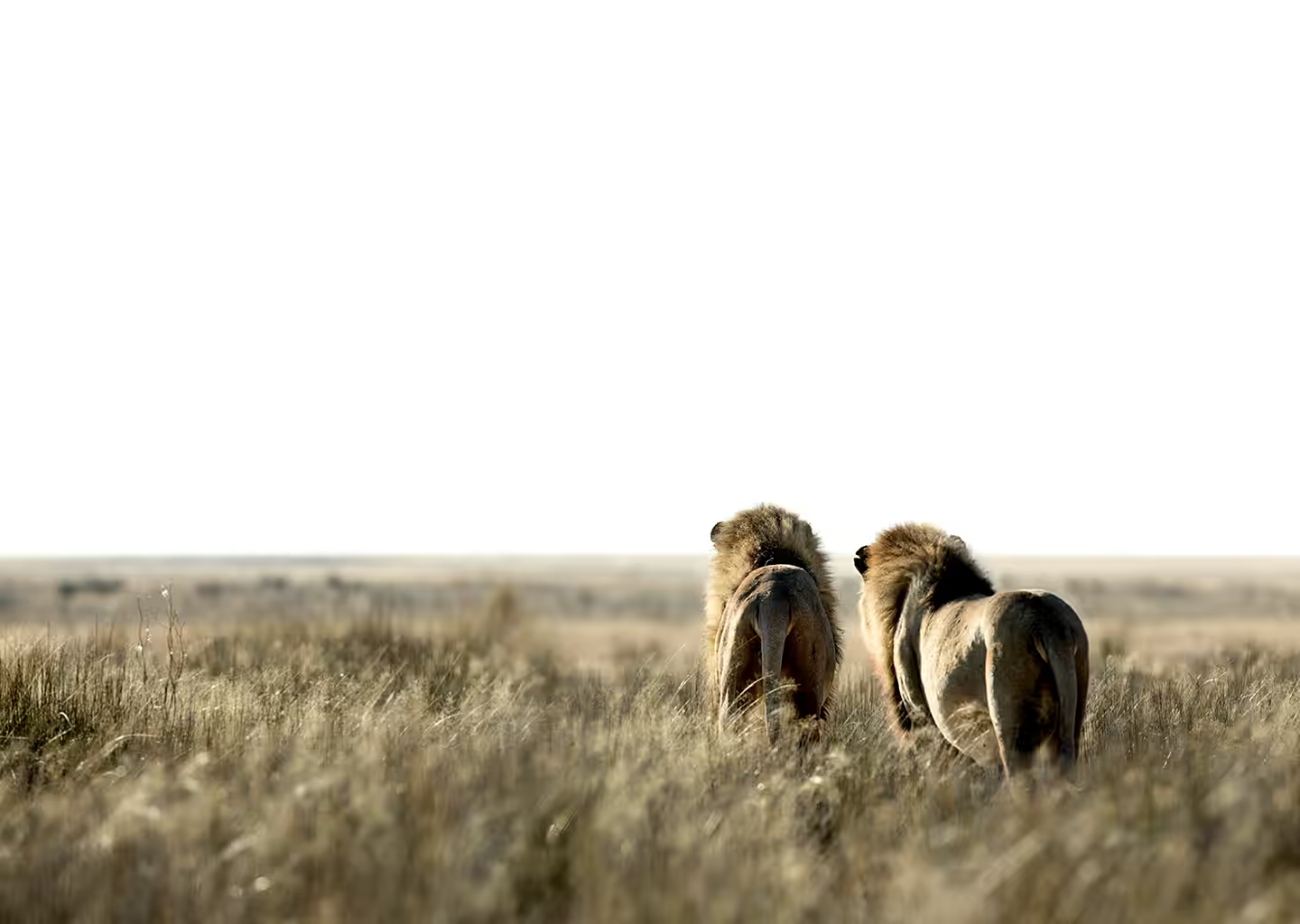The Ultimate East Africa Safari Photography Guide: Capture the Wild Through Your Lens
From the sweeping plains of the Serengeti to the mist-covered mountains of Rwanda, East Africa offers photographers an unparalleled canvas of wildlife, landscapes, and cultural richness. This comprehensive guide, crafted from decades of field experience, will transform your safari photos from simple snapshots to breathtaking art.
Why East Africa Stands Apart for Wildlife Photography
East Africa’s unique combination of vast open landscapes, extraordinary biodiversity, and established safari infrastructure makes it the premier global destination for wildlife photography. The region offers:
- Unmatched Predator Density: The highest concentration of lions, leopards, and cheetahs on the planet
- The Great Migration: Earth’s most spectacular wildlife event, involving 1.5 million wildebeest
- Dramatic Backdrops: From snow-capped Kilimanjaro to the endless Serengeti plains
- Exceptional Light: Clear morning light and golden evening hues perfect for photography
- Diversity of Ecosystems: Savanna, forest, wetlands, and mountains all within reach
Essential Equipment for East Africa Safari Photography
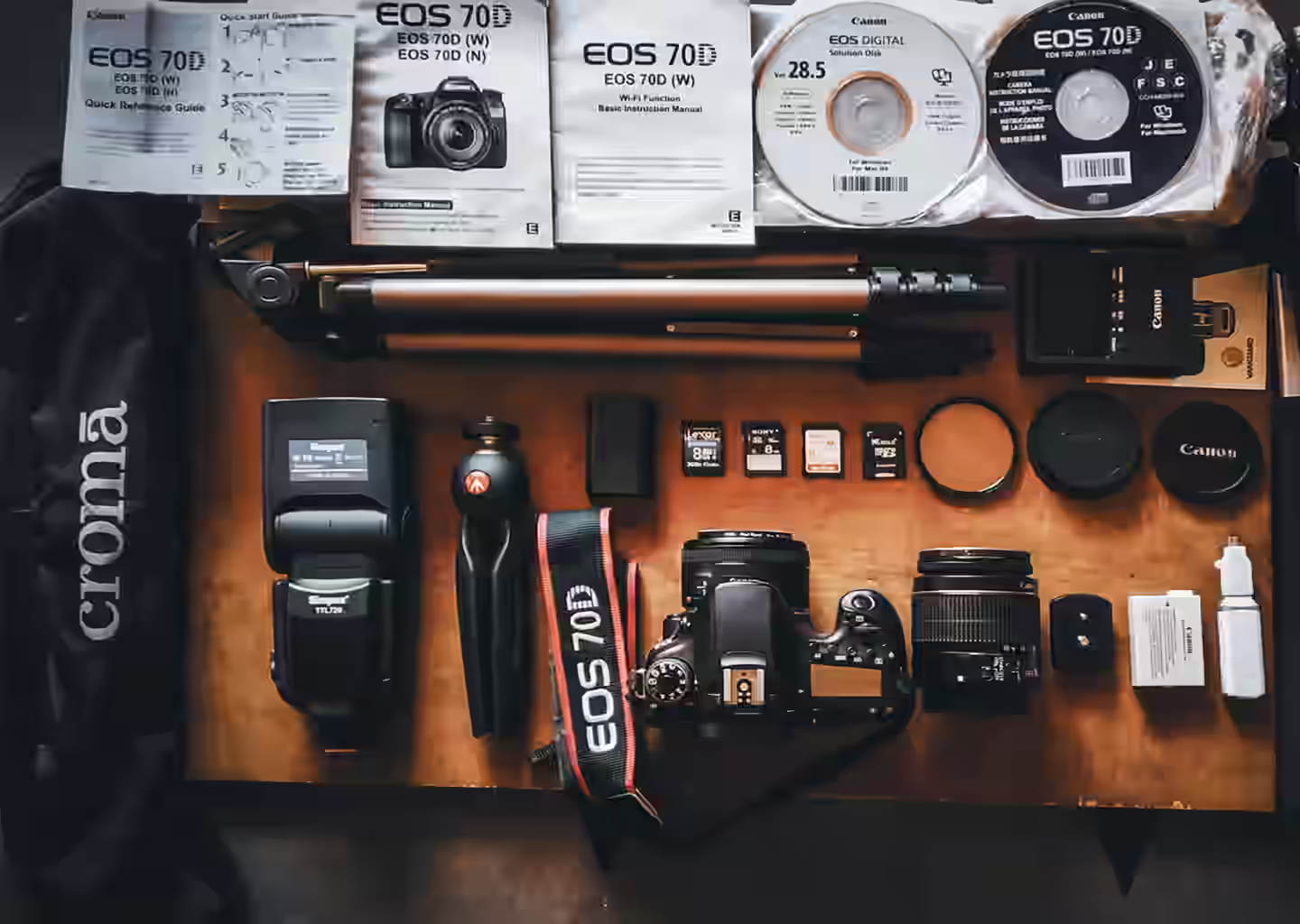
Camera Bodies
The challenging conditions of East African safaris demand specialized equipment. After testing dozens of camera setups in the field, here are my professional recommendations:
- Primary Camera: Full-frame mirrorless for low light performance (Sony Alpha 1, Canon R5, or Nikon Z9)
- Setting Tip: Configure custom buttons for quick access to exposure compensation and ISO in changing light
- Field Note: Weather-sealing is non-negotiable during green season safaris
- Secondary Camera: Crop-sensor body as backup and for extended reach
- Recommendation: Sony a6600, Canon 90D, or Nikon Z50
- Pro Tip: Keep this body mounted with a wide-angle lens for unexpected landscape opportunities
- Key Features to Prioritize:
- Fast autofocus with excellent subject tracking (essential for action shots)
- High frame rate (20fps+ for migration river crossings)
- Good dynamic range (for handling harsh contrast between shadows and highlights)
- Weather-sealing (dust is your constant companion)
Lenses for Safari Success
After guiding hundreds of photographers through East Africa, I’ve found this lens combination offers maximum versatility:
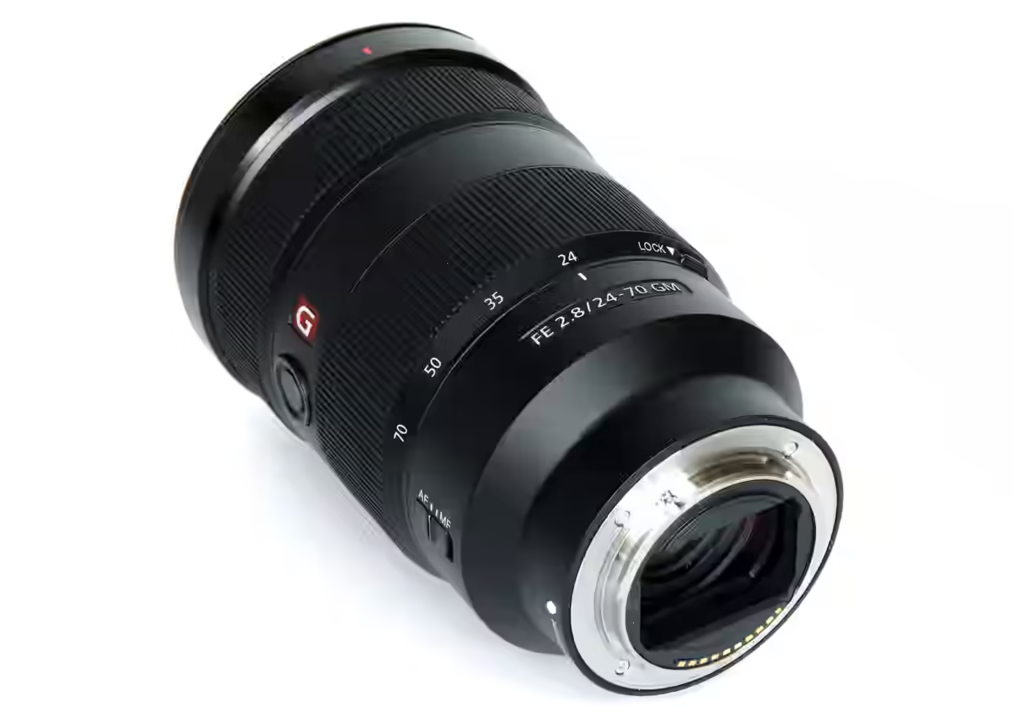
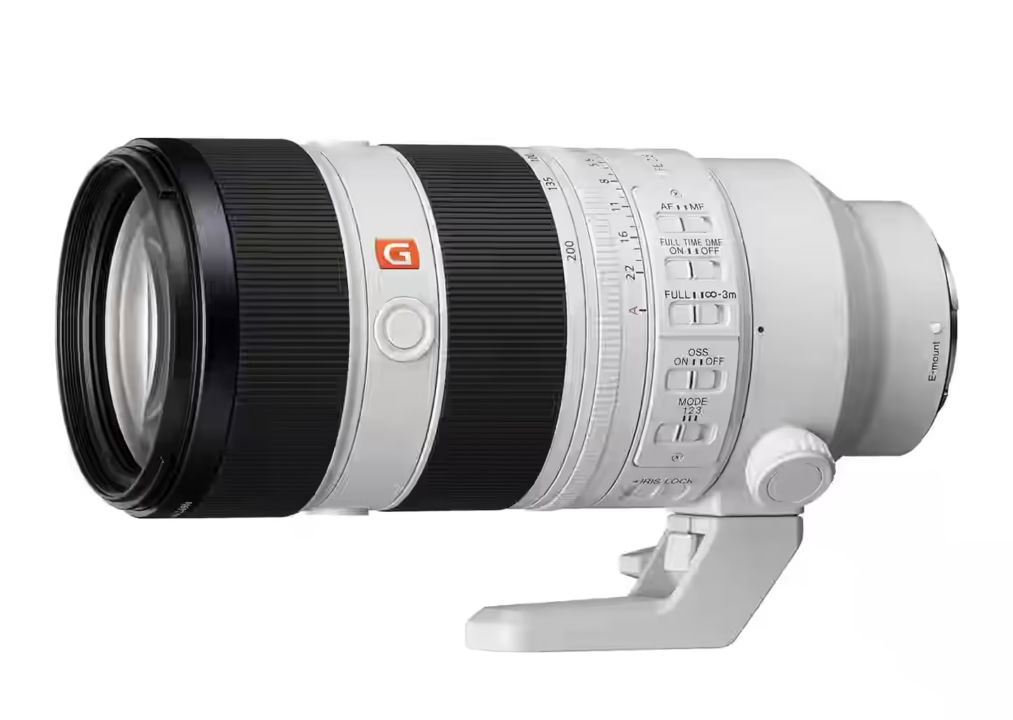
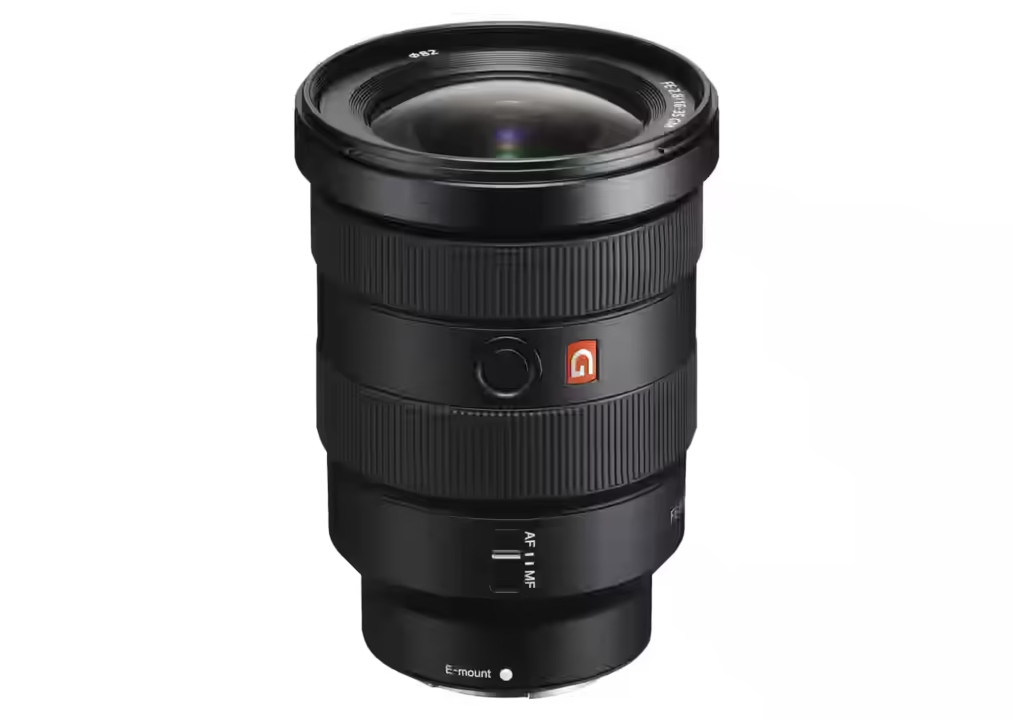
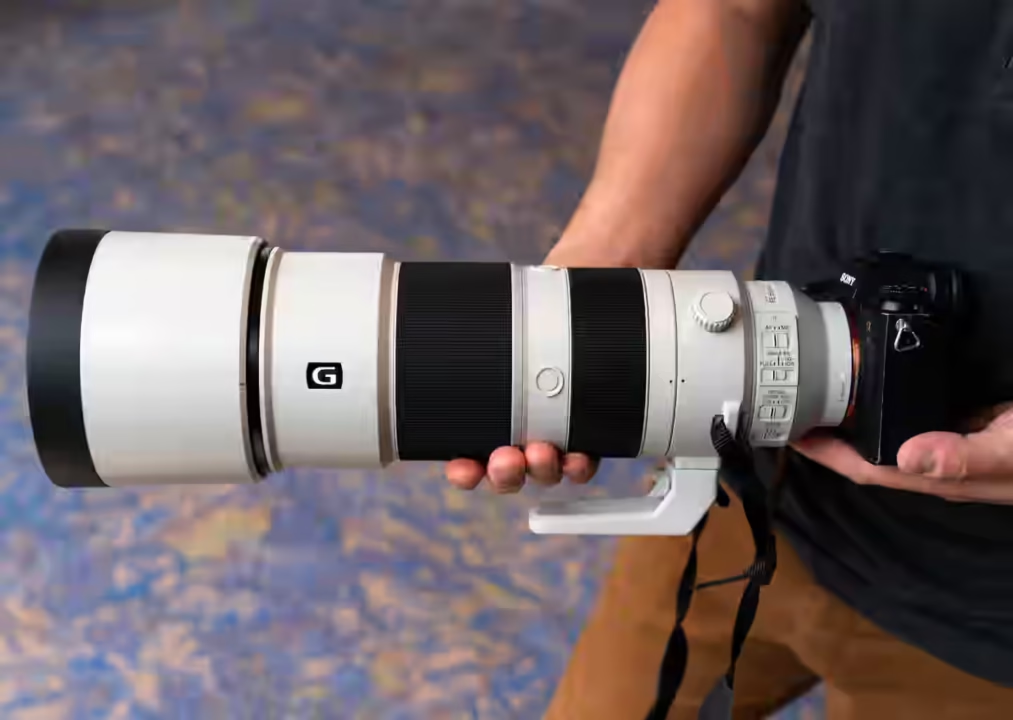
- 24-70mm f/2.8: For environmental portraits and landscapes
- Best For: Capturing elephants against Kilimanjaro, wide savanna vistas, cultural photography
- Setting Tip: Use f/8-f/11 for landscapes to maximize depth of field
- 70-200mm f/2.8: The workhorse for general wildlife
- Best For: Lions, elephants, and larger subjects within 20-50 meters
- Pro Tip: This focal range creates the most natural perspective for most mammals
- 100-400mm or 200-600mm: Essential for birds and distant subjects
- Field Test Results: Sony 200-600mm G offers the best value-to-performance ratio
- Setting Recommendation: Use with 1.4x teleconverter for shy subjects
- Wide Angle (16-35mm): For night sky and dramatic landscapes
- Special Application: Capturing star trails over acacia trees
- Pro Tip: Essential for photographing mountain gorillas in Uganda/Rwanda’s forests
Support Equipment for Sharp Images
The bouncy, dusty conditions of game drives present unique challenges for image stability:
- Carbon Fiber Tripod: Light enough to travel with, stable enough for low-light work
- Specific Recommendation: Gitzo Traveler or Really Right Stuff TFC-14
- Safari Hack: Remove the center column for maximum stability in windy conditions
- Bean Bag Support: The most practical support for vehicle-based photography
- Pro Method: Bring an empty bag and fill with beans/rice at your destination
- Positioning Tip: Place bean bag across door frame or window edge
- Gimbal Head: Essential for supporting heavy telephoto lenses
- Top Pick: Wimberley WH-200 Version II for smooth tracking of moving wildlife
- Worth Noting: Only necessary for lenses 400mm+ with 2.8 apertures
Essential Accessories
- Memory Cards: Bring twice what you think you’ll need (minimum 512GB total)
- Real-World Data: A single river crossing can generate 2,000+ images
- Batteries and Charging: Minimum 3 batteries per camera body
- Charging Solution: Solar chargers are useful in remote camps
- Cleaning Kit: Sensor cleaning tools, microfiber cloths, and air blower
- Dust Management: Put cameras in plastic bags during lens changes
- Filters: Circular polarizer for reducing glare and enhancing colors
- Application: Particularly useful for water scenes and eliminating reflections on foliage
Location-Specific Photography Guide to East Africa
Kenya: Prime Photography Destinations
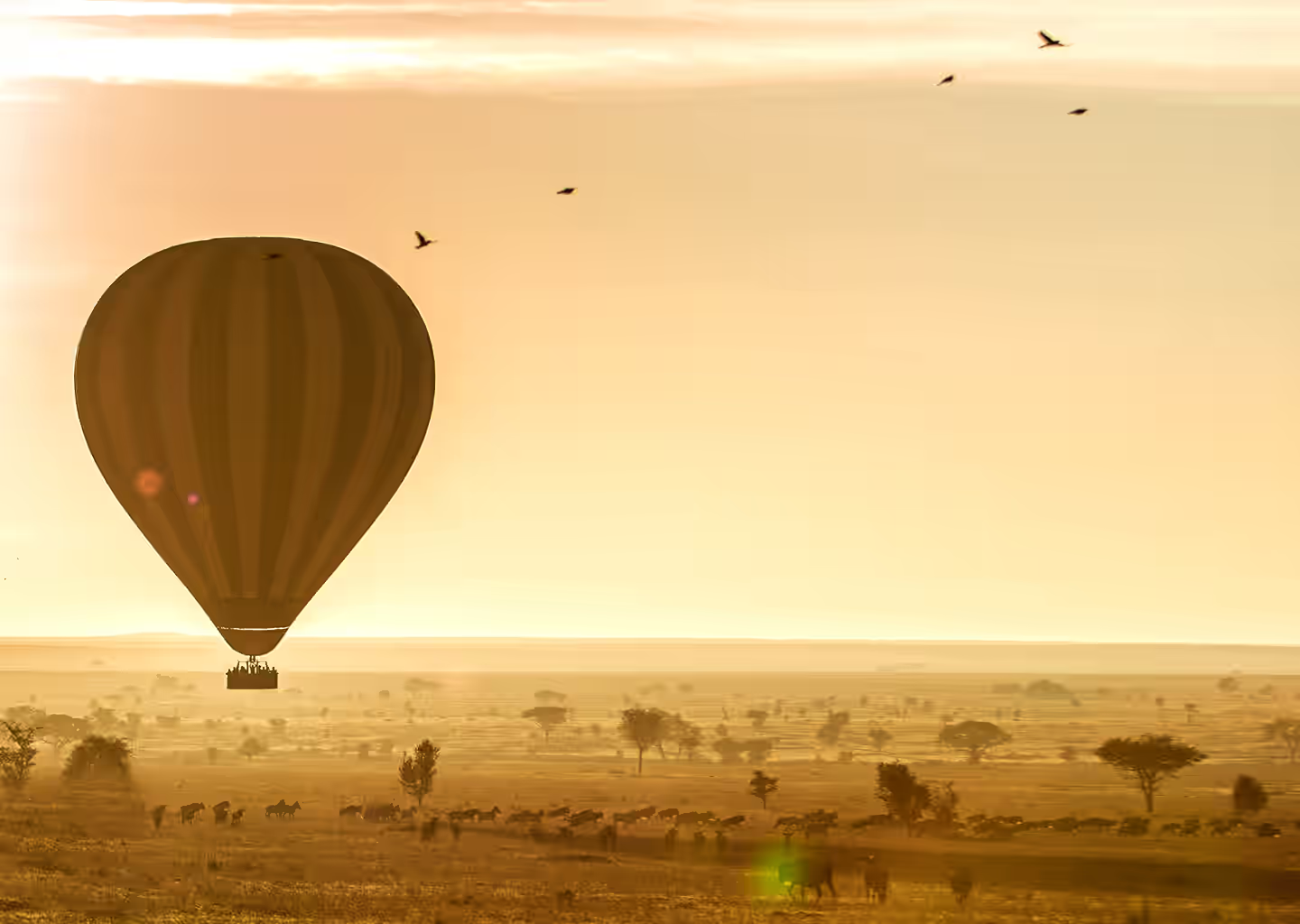
Masai Mara National Reserve
The crown jewel of wildlife photography locations offers exceptional opportunities year-round:
- Mara River Crossings (July-October):
- Optimal Position: Northern side facing south for ideal lighting
- Camera Settings: 1/2000sec, f/5.6, ISO 800
- Composition Tip: Capture both wide contextual shots and tight action frames
- Pro Secret: Main crossings usually occur 10:00-16:00; position yourself by 8:30
- Predator Photography:
- Prime Locations: Paradise Plains, Musiara Marsh, and Topi Plains
- Best Time: First and last light for hunting behavior
- Technique: Focus on eye contact and interaction between animals
- Insider Knowledge: Follow vultures to find recent kills for scavenging scenes
- Oloololo Escarpment:
- Golden Light: Morning light streams across the plains from this western ridgeline
- Unique Shot: Lions silhouetted against sunrise sky from Governor’s Camp area
- Compositional Element: Use acacia trees as framing devices
Amboseli National Park
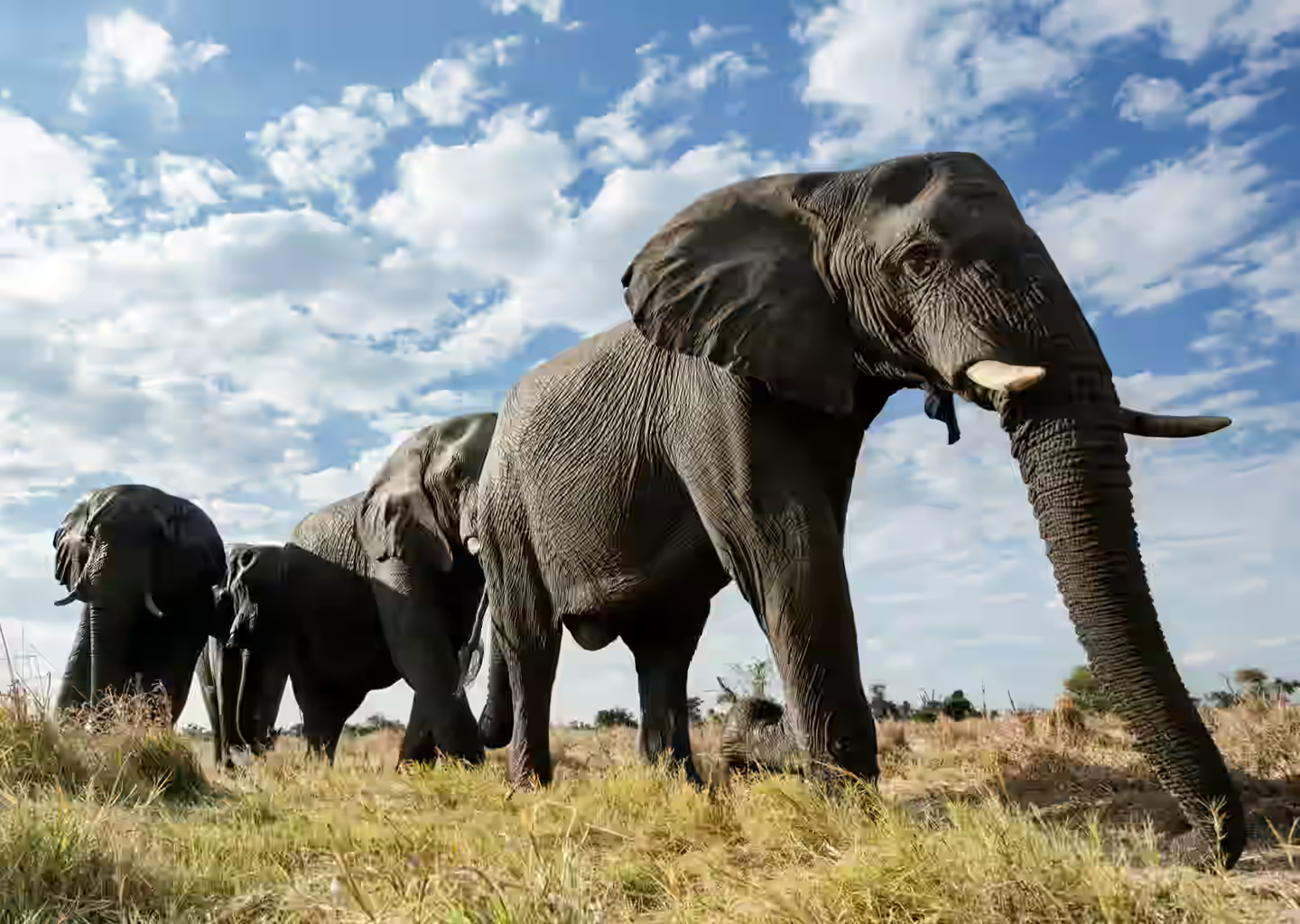
World-famous for elephants against the backdrop of Mount Kilimanjaro:
- Kilimanjaro Shots:
- Perfect Timing: 6:00-8:00 AM before clouds form on the mountain
- Prime Location: Eastern side of Ol Tukai area
- Pro Tip: Long lens (200mm+) compresses perspective, making the mountain appear larger
- Weather Note: December-February and August-September offer clearest mountain views
- Elephant Herds:
- Observation Patterns: Large family groups move through swamps mid-morning and afternoon
- Lighting Approach: Position for backlight to highlight dust and spray
- Unique Opportunity: Capture reflections in seasonal lakes
- Behavior Note: During February-March, synchronized breeding creates large gatherings
- Dust Management:
- Protection Strategy: Use rain covers even in dry conditions
- Camera Care: Change lenses inside vehicles or camera bags
- Post-Shoot Ritual: Thorough cleaning each evening with rocket blower
Other Kenyan Hotspots:
- Lake Nakuru: Flamingos and rhinos against alkaline lake
- Samburu: Unique northern species including Grevy’s zebra and reticulated giraffe
- Laikipia Plateau: Private conservancies allowing night photography and off-road positioning
Tanzania: Photographic Paradise
Serengeti National Park
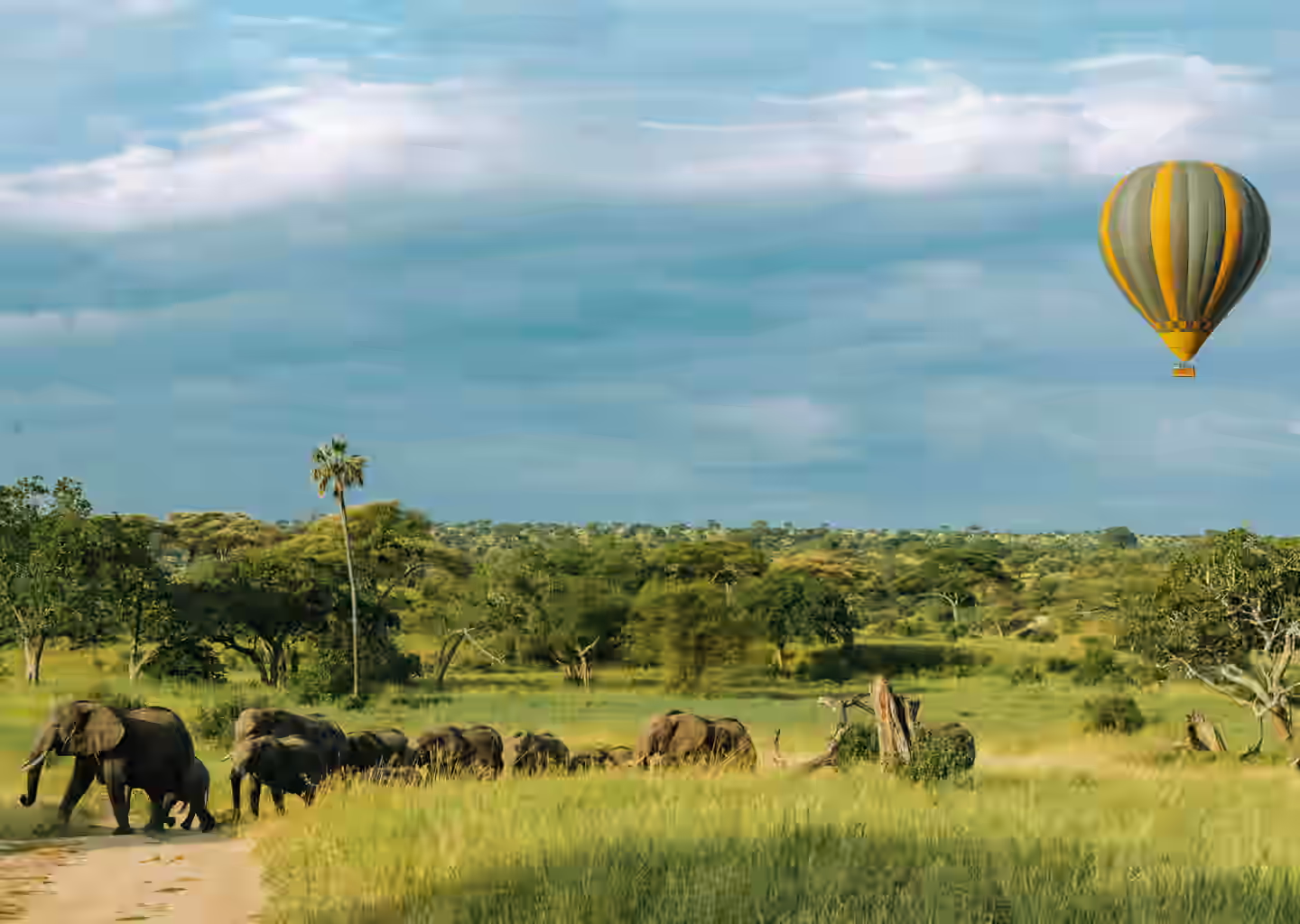
The Serengeti’s varied ecosystems require different photographic approaches:
- Northern Serengeti (July-October):
- Subject Focus: River crossings and large predators
- Technical Challenge: Fast-moving subjects in harsh midday light
- Solution: Expose for highlights, recover shadows in post-processing
- Equipment Recommendation: Fast telephoto (400mm+) with 1.4x teleconverter
- Central Serengeti (Year-round):
- Special Features: Seronera Valley predators and Maasai kopjes
- Composition Technique: Use kopjes as natural frames for lion portraits
- Lighting Approach: Early morning backlight through grass creates ethereal rim light
- Pro Secret: Visit Maasai kopjes during afternoon heat when lions climb rocks
- Western Corridor (May-July):
- Primary Subject: Migration moving through woodland and crossing Grumeti River
- Challenge: Dappled light through acacia trees
- Solution: Spot metering on medium-toned subjects
- Unique Opportunity: Crocodile predation at river crossings
- Southern Plains (December-March):
- Highlight: Calving season with predator action
- Landscape Element: Short grass plains create clean backgrounds
- Weather Consideration: Green season produces dramatic cloud formations
- Special Technique: Wide-angle approach for large herds against stormy skies
Ngorongoro Crater
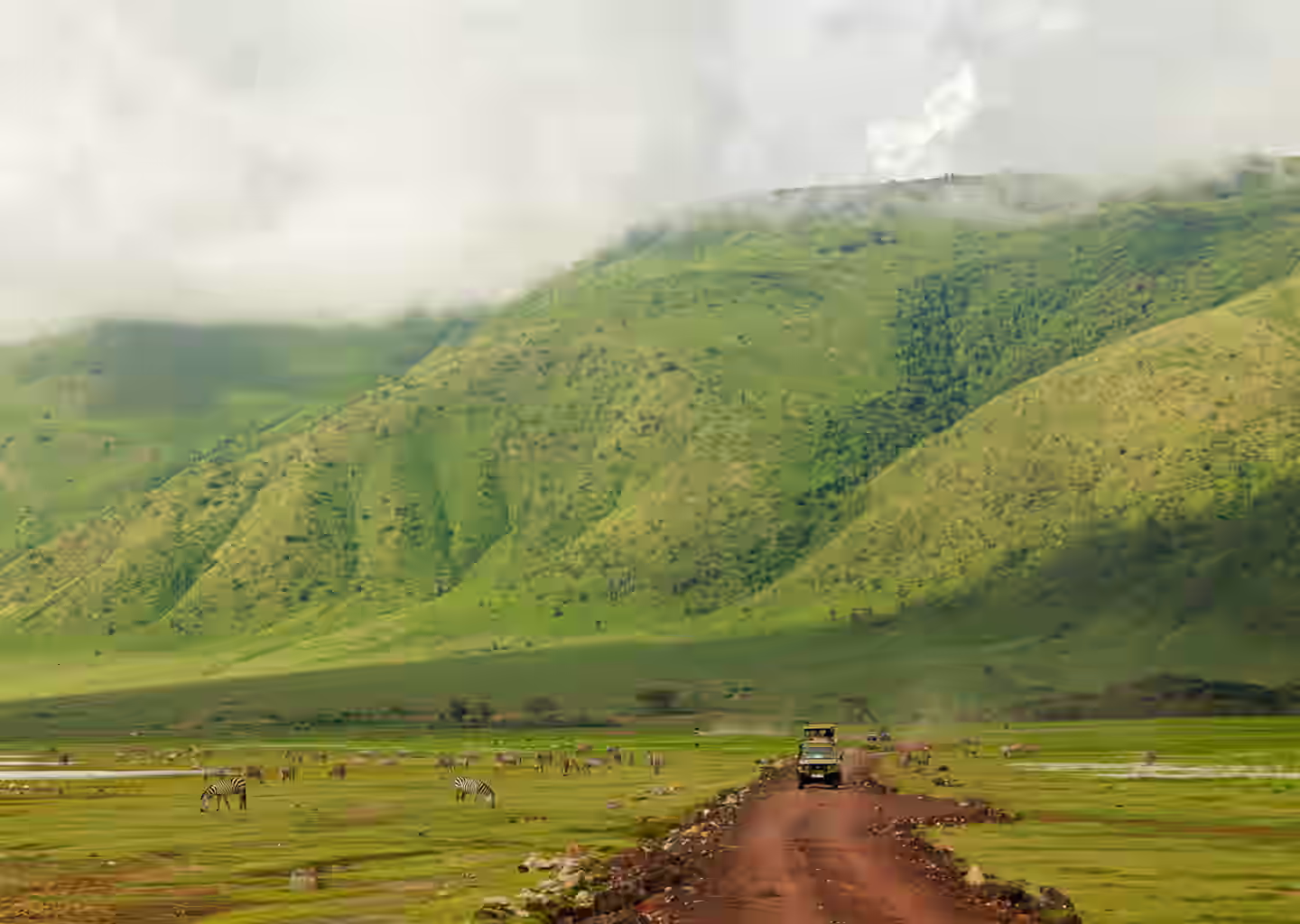
The world’s largest intact caldera offers concentrated wildlife in a dramatic setting:
- Crater Rim Photography:
- Optimal Time: Early morning for mist-filled crater views
- Lens Choice: Wide angle (16-35mm) for dramatic landscape
- Composition Tip: Use crater walls as leading lines
- Crater Floor Wildlife:
- Subject Specialties: Black rhino, large elephant bulls, dense lion prides
- Shooting Challenge: Hazy conditions by mid-morning
- Solution: Use polarizer to cut haze and enhance colors
- Positioning Strategy: West side in morning, east side in afternoon for optimal light
Other Tanzanian Destinations:
- Tarangire: Elephants among baobab trees, especially impressive during dry season
- Lake Manyara: Tree-climbing lions and forest environments with challenging light
- Mahale Mountains: Chimpanzee photography in forest setting
Uganda & Rwanda: Forest Photography
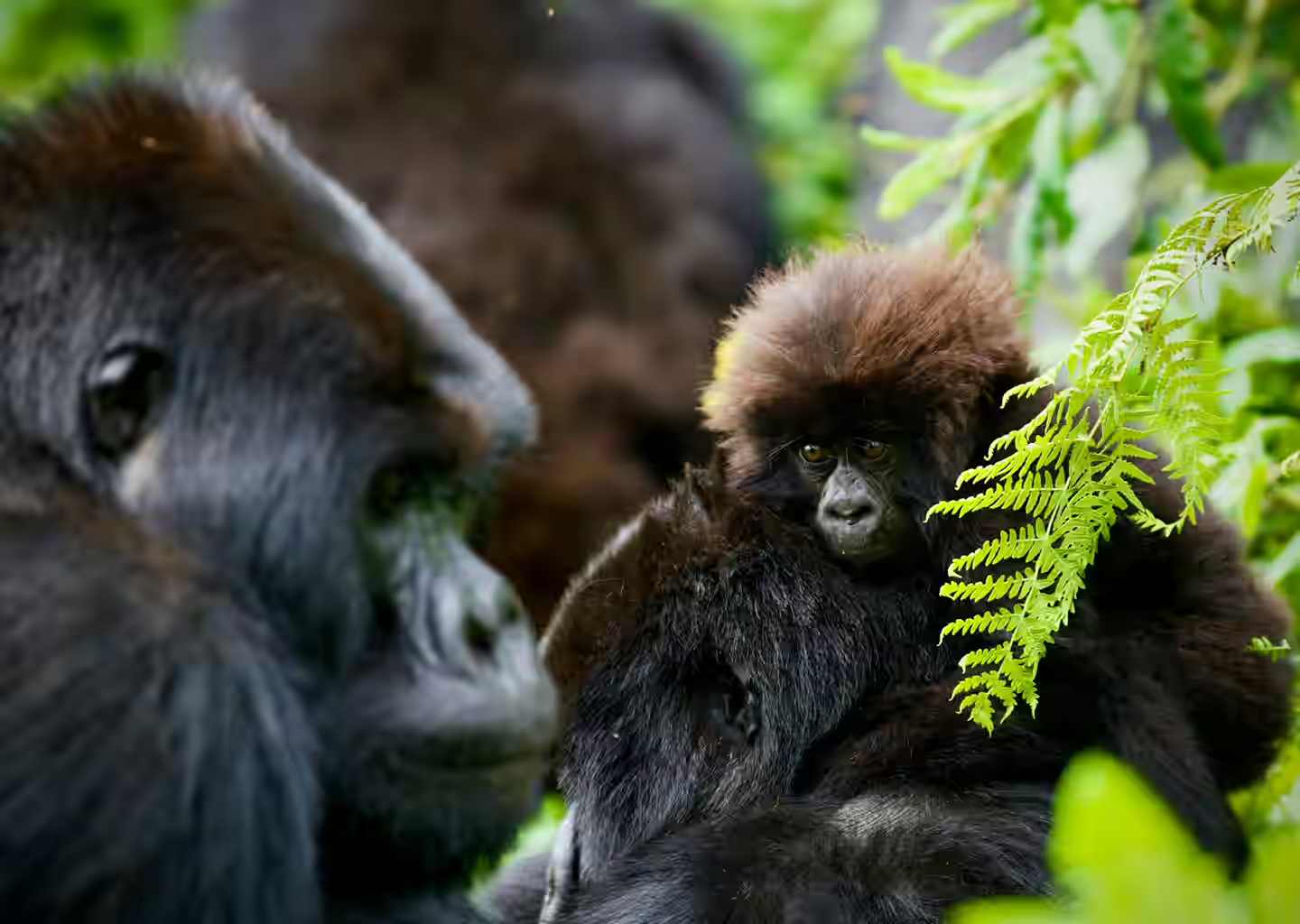
Mountain Gorilla Photography
The challenging forest environment requires specialized techniques:
- Equipment Adaptations:
- Camera Setting: High ISO capability essential (3200-6400 usable range)
- Lens Selection: 24-70mm f/2.8 or 70-200mm f/2.8 (wider than you might expect)
- Flash Consideration: Prohibited with gorillas; bring noise reduction software
- Exposure Techniques:
- Metering Method: Spot meter on gorilla’s face, then +1 stop compensation
- Recommended Mode: Aperture priority at f/2.8-f/4
- ISO Strategy: Auto ISO with minimum shutter speed 1/125s
- Pro Tip: Bracket exposures in challenging light
- Composition in Dense Forest:
- Background Control: Position for clearest view with minimal distractions
- Subject Focus: Prioritize eye contact and interaction shots
- Storytelling: Capture both environmental context and intimate portraits
- Unique Opportunity: Silverback portraits show power and gentleness
Other Forest Destinations:
- Queen Elizabeth National Park: Tree-climbing lions and chimpanzees
- Kibale Forest: More accessible chimpanzee photography
- Nyungwe Forest (Rwanda): Rare primate species in mountainous setting
Advanced Photography Techniques for East African Safaris
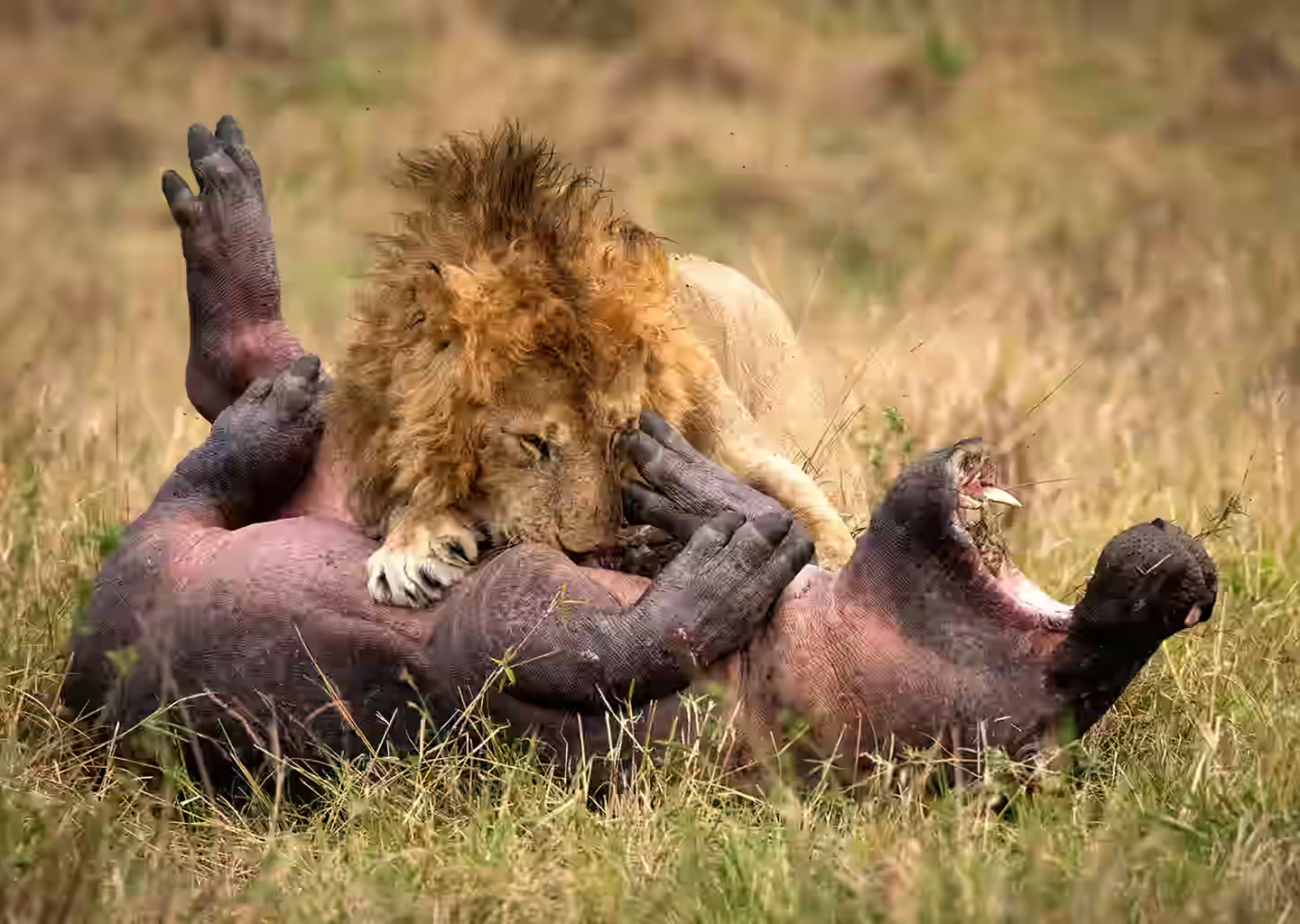
Light Management in Challenging Conditions
The harsh equatorial sun creates extreme contrast that requires specialized techniques:
- Golden Hour Optimization:
- Timing: 30 minutes after sunrise and 30 minutes before sunset is prime shooting time
- Subject Planning: Research animal movement patterns to predict locations during golden hour
- Color Enhancement: Set white balance to “Cloudy” to enhance warm tones
- Pro Strategy: Book longer stays at each location to increase golden hour shooting days
- Midday Light Solutions:
- Harsh Light Technique: Convert challenging midday shots to high-key black and white
- Subject Selection: Focus on dark-colored animals (elephants, buffalo) in bright light
- Technical Approach: Expose to the right without clipping highlights
- Positioning: Seek side-lighting when possible to add dimension
- Fill Flash Applications:
- Usage: Subtle fill for dark-faced animals like lions and leopards
- Setting: -1.5 to -2 stops flash compensation for natural look
- Diffusion: Use flash modifiers to soften light
- Distance Limitation: Effective to approximately 10 meters maximum
- Low Light Techniques:
- Noise Management: Use lowest viable ISO for conditions (test your camera limits)
- Stabilization: Brace against vehicle or use bean bag for slower shutter speeds
- Image Stacking: Take multiple identical frames to reduce noise in post-processing
- Pro Tip: Capture-in-RAW provides 1-2 stop additional recovery range
Animal Behavior Anticipation
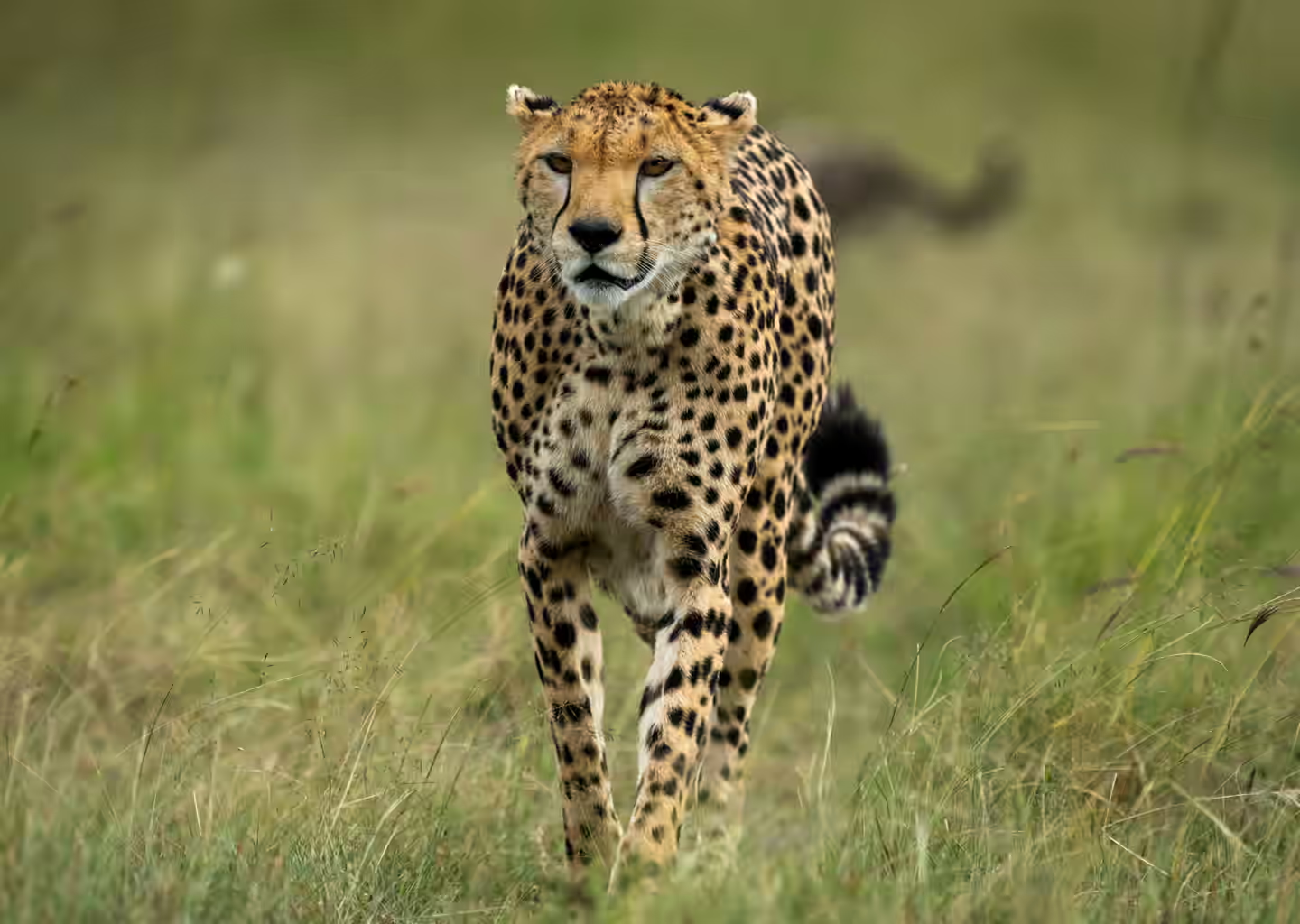
Understanding behavior patterns dramatically increases successful capture rate:
- Reading Body Language:
- Pre-Hunt Indicators: Ear position, eye focus, and posture changes
- Alert Signals: Head raises, ear swivels indicate potential action
- Practice Method: Observe single subject for extended periods to learn patterns
- Migration Knowledge: Zebras typically lead wildebeest to water; watch them first
- Anticipating Movement:
- Lion Hunting: Watch for synchronized group positioning and tail twitching
- Cheetah Stalking: Monitor head position for fixation on potential prey
- Composition Strategy: Leave space in frame for animal to move into
- Technical Preparation: Pre-focus on anticipated action point
- Predictable Behavior Patterns:
- Hunting Sequences: Predators most active at dawn and dusk
- River Crossings: Animals typically follow leaders; watch for gathering groups
- Bird Behavior: Flight paths become predictable at regular feeding grounds
- Special Event: After rain, animals often shake water, creating dramatic spray shots
Special Condition Techniques
Master these specialized scenarios for unique portfolio additions:
- Dust Management and Creative Use:
- Protection: Use rain covers during dusty game drives
- Creative Approach: Backlight dust for dramatic effect (elephants, buffalo)
- Technical Setting: 1/1000s minimum to freeze dust particles
- Post-Processing: Learn advanced dust spot removal techniques
- Rain Photography:
- Equipment Protection: AquaTech rain covers for camera and lens
- Creative Opportunity: Capture raindrops on animals, rainbow formations
- Exposure Adjustment: +1/3 to +2/3 stop to account for dark conditions
- Focus Challenge: Single-point AF on high-contrast areas of subject
- Night Photography:
- Star Trails: Stack multiple 30-second exposures
- Milky Way: f/2.8, 20-30 seconds, ISO 3200-6400
- Light Painting: Subtle illumination of foreground elements
- Pro Tip: Scout compositions during daylight hours
- Aerial Photography:
- Balloon Safaris: Use VR/IS lenses and 1/1000s minimum shutter speed
- Shooting Angle: Frame at slight downward angle for context and depth
- Equipment Note: Zoom lenses provide versatility in the changing aerial perspective
- Special Opportunity: Migration herds from above reveal fascinating patterns
Post-Processing Workflow for Safari Images
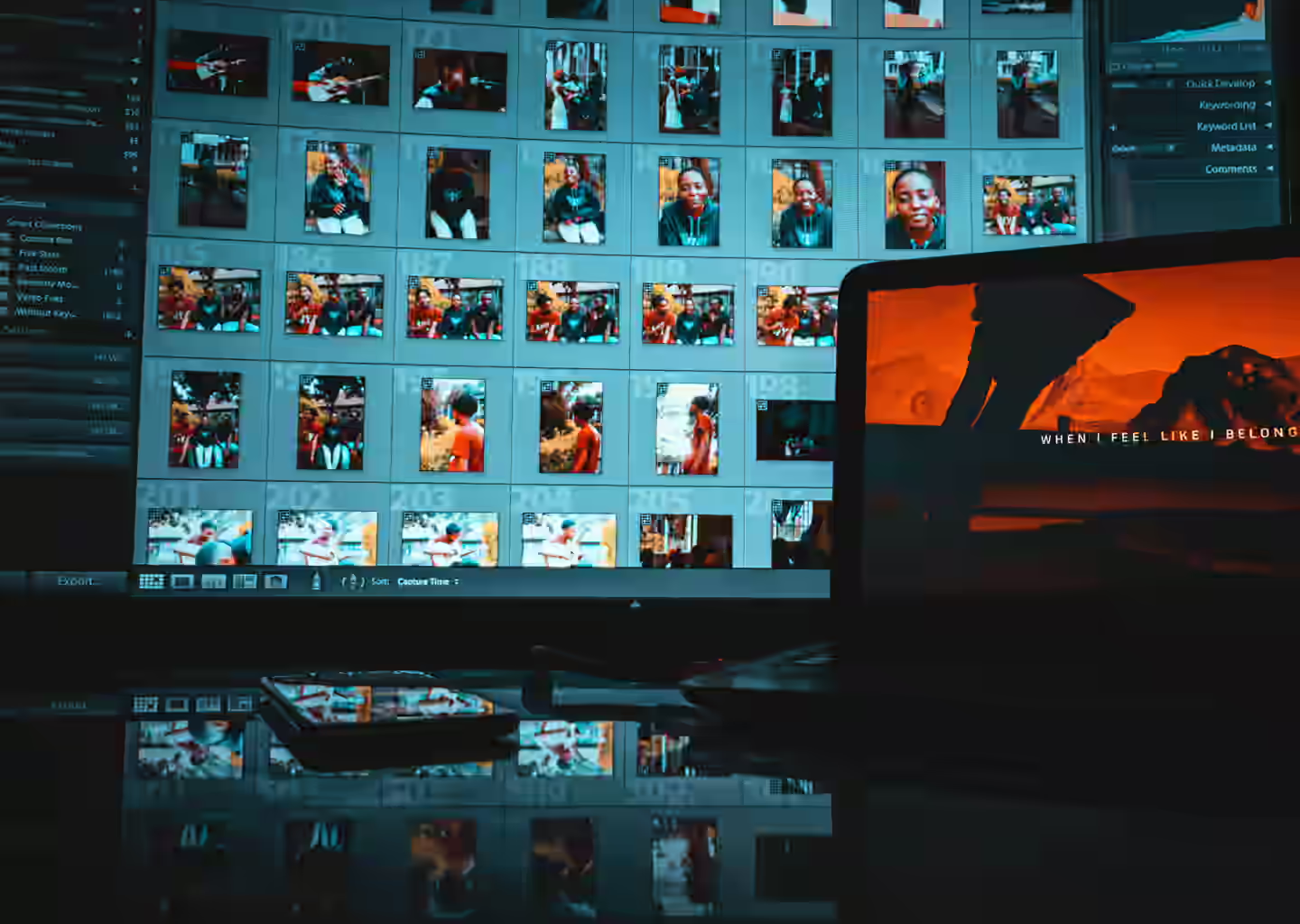
Basic Workflow Essentials
Develop an efficient system to handle the thousands of images from each safari:
- RAW Processing Foundation:
- Initial Culling: Use fast image viewers (Photo Mechanic) for first-pass selection
- Rating System: Star system for prioritizing editing workflow
- Batch Processing: Apply base corrections to similar images
- Organization: Location and subject-based folder structure
- Color Calibration for Accuracy:
- White Balance Correction: Use X-Rite ColorChecker for accurate color reference
- East Africa Color Challenge: Adjust for the unique warm tones of savanna grass
- Seasonal Variations: Different processing approaches for green and dry seasons
- Monitor Calibration: Essential for consistent results across devices
- Precision Dust Spot Removal:
- Methodical Approach: Systematic scanning at 100% view
- Automation Tool: Use Lightroom’s Visualize Spots feature
- Persistent Issues: Map sensor dust for recurring spot patterns
- Time-Saving Tip: Create dust spot presets for common patterns
- Selective Sharpening Techniques:
- Subject Isolation: Mask selection for animal eyes and fur detail
- Background Treatment: Reduce sharpening on out-of-focus backgrounds
- Resolution Consideration: Adjust sharpening amount based on final output size
- Noise Balance: Reduce sharpening in shadow areas to prevent noise amplification
Advanced Editing Approaches
Take your images to the next level with these professional techniques:
- Focus Stacking for Landscapes:
- Application: Foreground acacia to distant mountains
- Shooting Technique: 3-7 images with focus points throughout scene
- Software Recommendation: Helicon Focus for automated stacking
- Blending Challenge: Manual masking may be needed for moving elements
- HDR in Challenging Light:
- Subtle Approach: 3-exposure bracket for natural-looking results
- Best Applications: Backlit animals against bright sky
- Software Choice: Lightroom’s HDR Merge for most natural results
- Common Mistake: Avoid over-processing that creates unnatural halos
- Wildlife Portrait Enhancement:
- Eye Sharpening: Create separate adjustment layer for eyes
- Selective Contrast: Dodge and burn techniques for dimensional effect
- Texture Enhancement: Clarity adjustment on fur, hide, and feather detail
- Color Refinement: Selective saturation for natural-looking results
- Ethical Considerations:
- Sky Replacement: Acceptable only in clearly disclosed artistic interpretations
- Animal Addition/Removal: Avoid for documentary and journalistic work
- Color Adjustment: Maintain natural appearance of wildlife
- Location Accuracy: Properly caption and represent where images were taken
Specialized Safari Options for Photographers
Photographic Vehicles
Purpose-designed photography vehicles dramatically improve shooting opportunities:
- Bean Bag Placement Options:
- Optimal Setup: Multiple height options on window frames
- Stability Enhancement: Non-slip surfaces for secure lens support
- Weight Consideration: Heavier beans provide better stability
- Pro Setup: Custom window mounts with Wimberley heads
- Power Solutions:
- Vehicle Integration: Inverters connected to vehicle power
- Portable Options: High-capacity power banks (30,000mAh+)
- Solar Charging: Foldable panels for remote locations
- Battery Management: Charging rotation system for continuous coverage
- Storage Systems:
- Accessibility Priority: Quick-access camera bags designed for vehicle constraints
- Protection Focus: Dust-proof cases for equipment not in use
- Organization: Lens change station with dust protection
- Practical Solution: Think Tank modular belt system for essential accessories
- Stabilization Options:
- Vehicle Attachment: Custom clamps for secure mounting
- Vibration Reduction: Isolation systems for long telephoto lenses
- Quick-Release Systems: Arca-Swiss compatible for fast transitions
- Weight Consideration: Balance portability with stability
Hide Photography
Specialized hides offer unique perspectives unavailable on standard game drives:
- Low-Light Techniques:
- Exposure Settings: Begin at ISO 1600, f/4, 1/125s and adjust as needed
- Noise Reduction: Apply in-camera and post-processing for cleaner results
- Static Subject Advantage: Slower shutter speeds possible when photographing feeding birds
- Pre-Dawn Strategy: Position early for first light on arriving animals
- Remote Trigger Systems:
- Camera Trap Setup: Infrared or pressure plate triggers
- Wireless Control: CamRanger or similar for remote operation
- Multiple Camera Arrays: Synchronized triggering for action sequences
- Pre-Visualization: Test compositions with stand-in subjects
- Time-Lapse Opportunities:
- Subject Selection: Waterhole activity over full day
- Interval Setting: 10-30 seconds depending on activity level
- Power Management: External battery packs for extended shooting
- Weather Protection: Rain covers essential even in dry season
- Waterhole Strategy:
- Positioning: Consider sun angle throughout day
- Background Selection: Clean backdrops for subject isolation
- Timing Knowledge: Research species-specific drinking patterns
- Patience Requirement: Typically 4+ hours for significant activity
Conservation Photography in East Africa
Ethical Approaches
Responsible photography practices protect wildlife and enhance your images:
- Distance Guidelines:
- Species-Specific Approach: Predators require greater distance than herbivores
- Behavioral Indicators: Watch for stress signals indicating too close proximity
- Field Guide Partnership: Work with experienced guides for appropriate positioning
- Equipment Solution: Longer lenses reduce need for close approach
- Impact Minimization:
- Vehicle Positioning: Never block animal movement paths
- Group Coordination: Communication between vehicles prevents crowding
- Habitat Respect: Stay on established tracks in sensitive areas
- Time Limitation: Restrict viewing time with sensitive subjects
- Truth in Editing:
- Realistic Representation: Maintain integrity of wildlife behavior
- Caption Honesty: Clearly indicate captive subjects when applicable
- Context Preservation: Avoid removing elements that change ecological story
- Conservation Accuracy: Present accurate information about species status
- Cultural Sensitivity:
- Permission Protocol: Always obtain consent before photographing local people
- Fair Compensation: Appropriate payment for cultural photography
- Representation Integrity: Avoid stereotypical or exploitative imagery
- Knowledge Sharing: Return images to communities when possible
Storytelling Through Images
Create compelling visual narratives that educate and inspire conservation action:
- Building Narratives:
- Story Arc Development: Capture beginning, middle, and resolution
- Character Focus: Follow individual animals to develop connection
- Environmental Context: Show habitat relationship with subject
- Conservation Thread: Illustrate threats and solutions visually
- Sequential Shooting:
- Behavior Documentation: Capture complete behavioral sequences
- Varying Perspectives: Wide, medium, and close-up shots of same subject
- Time Progression: Document changes throughout day or seasons
- Technical Consistency: Maintain similar processing style across sequence
- Environmental Context:
- Habitat Inclusion: Show animals in natural environments
- Scale Demonstration: Include elements that provide size reference
- Ecological Relationships: Capture predator-prey or symbiotic interactions
- Seasonal Variations: Document how landscapes and wildlife adapt seasonally
- Human Elements:
- Conservation Work: Document researchers, rangers, and community efforts
- Coexistence Stories: Show human-wildlife interface
- Solution Focus: Highlight successful conservation initiatives
- Aspiration Balance: Present challenges honestly while maintaining hope
Seasonal Photography Opportunities in East Africa
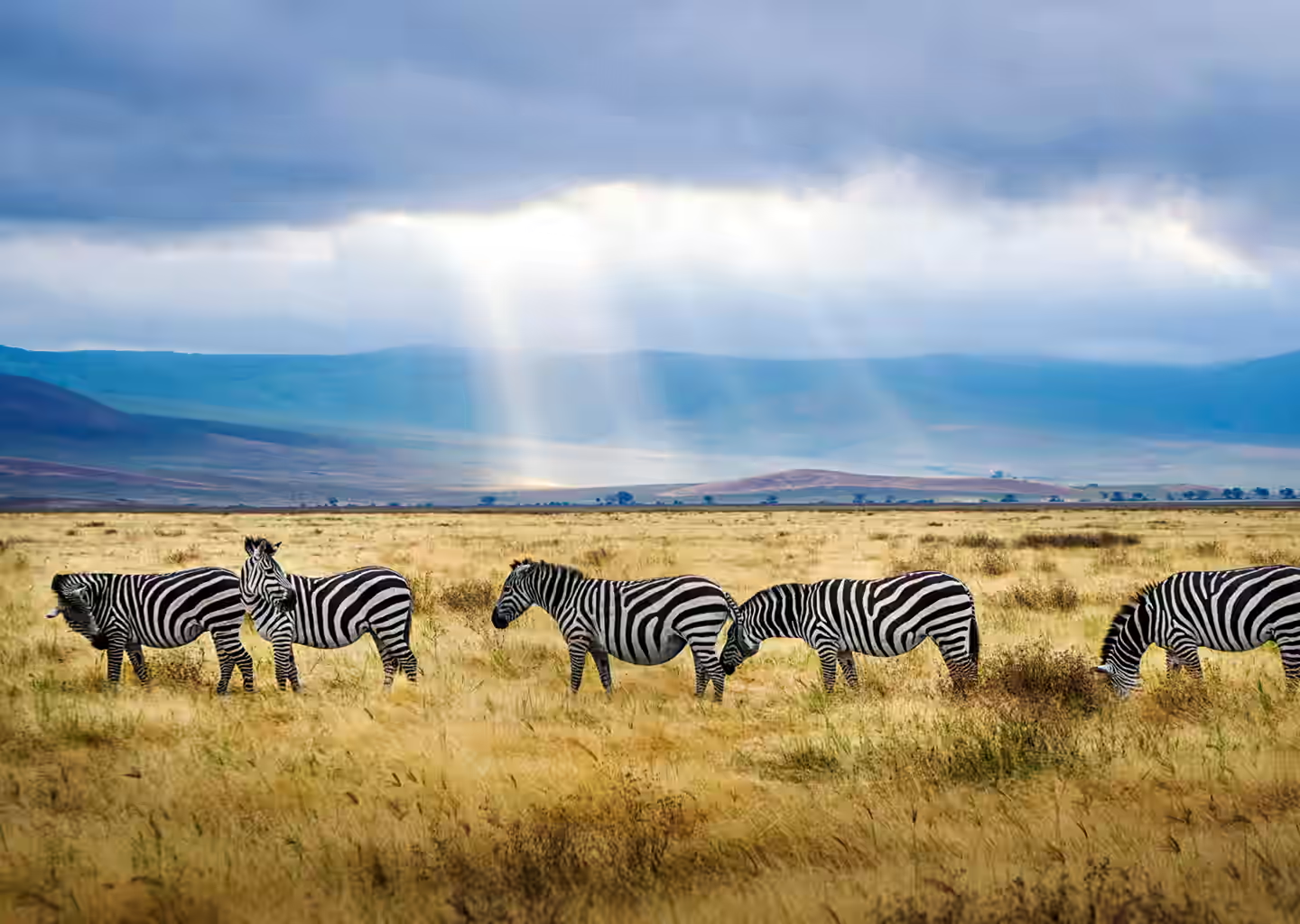
Green Season (November-May)
The lush rainy season offers distinctive photographic advantages:
- Dramatic Skies:
- Cloud Formations: Towering cumulus create dramatic backgrounds
- Lighting Opportunities: Crepuscular rays through storm clouds
- Technical Approach: Bracket exposures for dynamic range
- Compositional Strategy: Position horizons to maximize cloud impact
- Lightning Capture:
- Safety First: Photograph from vehicle with windows up
- Camera Setup: Bulb mode, ISO 100, f/8-f/11
- Triggering Method: Lightning trigger device for precise capture
- Composition Planning: Wide angle to include landscape context
- Rain Protection Strategies:
- Equipment Covers: Professional rain covers or emergency plastic bags
- Lens Hood Importance: Prevents droplets on front element
- Absorbent Cloth: Quick-dry microfiber for immediate drying
- Camera Body Selection: Weather-sealed bodies essential
- Lush Landscape Advantage:
- Color Contrast: Animals pop against green backgrounds
- Wildflowers: Serengeti plains covered in seasonal blooms
- Fresh Predators: Well-fed lions and leopards in peak condition
- Special Event: February calving season in southern Serengeti
Dry Season (June-October)
The traditional safari season offers predictable wildlife viewing and unique opportunities:
- Harsh Light Management:
- Exposure Strategy: Slight underexposure to preserve highlights
- Filter Application: Polarizer to reduce glare on dry vegetation
- Midday Options: Convert to black and white or focus on birds in shade
- Technical Solution: HDR techniques for extreme contrast scenes
- Water Hole Concentration:
- Position Planning: Arrive early for optimal shooting angle
- Species Interaction: Capture diverse animals sharing limited resources
- Behavioral Opportunity: Dominance displays at crowded water sources
- Patience Reward: All-day presence yields complete activity cycles
- Heat Haze Mitigation:
- Timing Solution: Shoot early before ground heats up
- Technical Approach: Faster shutter speeds minimize visible distortion
- Position Strategy: Shoot from elevated positions when possible
- Distance Limitation: Recognize when heat haze makes telephoto work impossible
- Clear Night Advantages:
- Milky Way Visibility: June-August offers best galactic core viewing
- Landscape Integration: Silhouette trees and landforms against star field
- Equipment Requirement: Fast wide-angle lens (f/2.8 or faster)
- Technical Setting: 20-30s exposure, ISO 3200-6400, manual focus to infinity
Publishing Your East Africa Safari Images
Portfolio Development
Transform your safari photos into a cohesive and impressive collection:
- Image Selection Strategy:
- Quality Over Quantity: Limit portfolio to strongest 20-30 images
- Diversity Balance: Include variety of species, behaviors, and techniques
- Signature Style: Develop consistent processing approach
- Critical Evaluation: Seek professional feedback on final selections
- Story Development:
- Theme Creation: Organize around concepts like “Mothers and Young” or “Predator-Prey”
- Location Narratives: Create geographic journeys through images
- Conservation Focus: Highlight endangered species or habitats
- Personal Connection: Include your unique perspective and experiences
- Market Research:
- Publication Analysis: Study magazine and website preferences
- Competition Assessment: Identify gaps in existing safari photography
- Trend Awareness: Follow emerging styles and subjects
- Audience Identification: Determine if targeting general or specialized viewers
- Submission Guidelines:
- Technical Requirements: Resolution, file format, and color space specifications
- Rights Understanding: Clear knowledge of usage terms
- Presentation Format: Digital delivery methods and organization
- Supporting Content: Captions, metadata, and story context
Social Media Strategy
Effectively share your safari photography with a global audience:
- Platform Optimization:
- Instagram: Square or vertical crops, focus on impactful single images
- Facebook: Album organization by location or theme
- Twitter: Pair images with conservation facts or stories
- Specialized Platforms: Consider nature-focused communities like NaturePlx
- Hashtag Strategy:
- Location Tags: #SerengetiSafari #MasaiMaraPhotography #EastAfricaSafari
- Subject Tags: #WildlifePhotography #BigCats #GreatMigration
- Technical Tags: #TelephotoPhotography #GoldenHourLight
- Conservation Tags: #SaveLions #WildlifeConservation
- Engagement Techniques:
- Storytelling Captions: Share the context and narrative behind images
- Behind-the-Scenes: Include photographic process information
- Conservation Education: Provide species information and status
- Community Interaction: Respond to comments and questions
- Ethical Considerations:
- Location Protection: Avoid precise locations for sensitive species
- Accurate Representation: Honest portrayal of wildlife behavior
- Influence Responsibility: Promote ethical wildlife viewing practices
- Photography Transparency: Disclose significant editing or controlled situations
East Africa Safari Photography Workshops
Expert-Led Experiences
Join our specialized photography safaris led by award-winning wildlife photographers:
- Small Group Advantage: Maximum 6 photographers per vehicle ensures ample shooting space
- Extended Golden Hour: Special permission for early entry and late exit from parks
- Technical Workshops: Daily sessions on specialized techniques and post-processing
- Location Expertise: Access to photographically productive locations off the tourist circuit
Custom Vehicle Features
- Photographer-Designed Vehicles: Customized 4x4s with:
- Bean bag supports at multiple heights
- Power inverters at each seat
- Dust-protected storage compartments
- Flexible seating arrangements
Conservation Focus
- Research Support: Portion of proceeds funds wildlife monitoring programs
- Community Connection: Visits to local conservation initiatives
- Ethical Practices: Strict adherence to wildlife viewing guidelines
- Educational Component: Lectures from resident researchers and conservationists
Frequently Asked Questions: East Africa Safari Photography
What is the best time of year for safari photography in East Africa?
The optimal time depends on your photography goals. June through October (dry season) offers reliable wildlife sightings around water sources and clear skies, while December through May (green season) provides lush backgrounds, dramatic skies, and newborn animals. For Great Migration river crossings, focus on July through September in the Masai Mara.
What camera equipment do I need for an East Africa safari?
Essential equipment includes:
- A full-frame or crop-sensor camera with good low-light performance
- Telephoto lens (at least 200mm, ideally 400mm+)
- Mid-range zoom (70-200mm)
- Wide-angle lens for landscapes and environmental context
- Robust tripod or bean bag support
- Plenty of memory cards (at least 256GB)
- Multiple batteries and charging solutions
- Dust protection for all equipment
Which locations in East Africa offer the best wildlife photography opportunities?
Top photography destinations include:
- Kenya’s Masai Mara (big cats and migration)
- Amboseli (elephants with Kilimanjaro backdrop)
- Tanzania’s Serengeti (predators and migration)
- Ngorongoro Crater (concentrated wildlife)
- Uganda’s Bwindi Impenetrable Forest (mountain gorillas)
- Rwanda’s Volcanoes National Park (gorillas in misty mountains)
How can I photograph the Great Migration?
For successful migration photography:
- Time your visit for river crossings (July-September in the Mara, June in Western Serengeti)
- Position at known crossing points early in the day
- Use fast shutter speeds (1/2000s+) to freeze action
- Capture both wide contextual shots and close-up drama
- Be patient—crossings may take hours to develop but seconds to happen
- Follow vultures to locate predator activity around the migration
What camera settings work best for East African wildlife?
Start with these base settings for East African wildlife:
- Aperture priority mode (f/5.6-f/8) for optimal depth of field
- ISO 400-800 in good light, 1600-3200 in low light
- Minimum shutter speed of 1/500s for stationary wildlife
- 1/2000s or faster for action shots and birds in flight
- Focus on the animal’s eye using single-point AF or subject tracking
- Expose to protect highlights, especially for scenes with bright sky
- Consider back-button focusing for better control of moving subjects
Do I need a photography guide or can I shoot independently?
While independent photography is possible, a specialized photography guide offers significant advantages:
- Knowledge of animal behavior helps anticipate photo opportunities
- Positioning experience for optimal lighting and backgrounds
- Access to less-visited areas with exceptional photographic potential
- Technical assistance with equipment challenges in the field
- Cultural and ecological context that enhances your storytelling
How do I protect my equipment in dusty safari conditions?
Dust is the primary enemy of camera equipment on safari. Protect your gear with:
- Dedicated camera rain/dust covers even in dry conditions
- Change lenses infrequently and only inside vehicles or camera bags
- Use compressed air to clean equipment daily
- Apply silica gel packets in camera bags to absorb moisture
- Consider weather-sealed professional equipment for maximum durability
- Keep a UV filter on lenses primarily for dust protection
- Pack camera bodies with sensor cleaning tools for inevitable dust spots
Book Your East Africa Photography Safari
Ready to capture the extraordinary wildlife and landscapes of East Africa? Beaumont Tours offers specialized photography safaris led by professional wildlife photographers with decades of experience in the region.
Our photography-focused safaris feature:
- Custom-designed vehicles with photography platforms and bean bag supports
- Flexible schedules that prioritize optimal lighting conditions
- Small groups (maximum 6 photographers) for personalized attention
- Expert guidance on animal behavior, compositions, and technical settings
- Access to exclusive locations away from tourist crowds
- Conservation focus with direct support to wildlife protection initiatives
Contact our photography safari specialists to design your ultimate East Africa photography adventure.
Remember, great safari photography combines technical skill with deep understanding of wildlife behavior and respect for the environment. Take time to learn your subjects, not just your camera.

